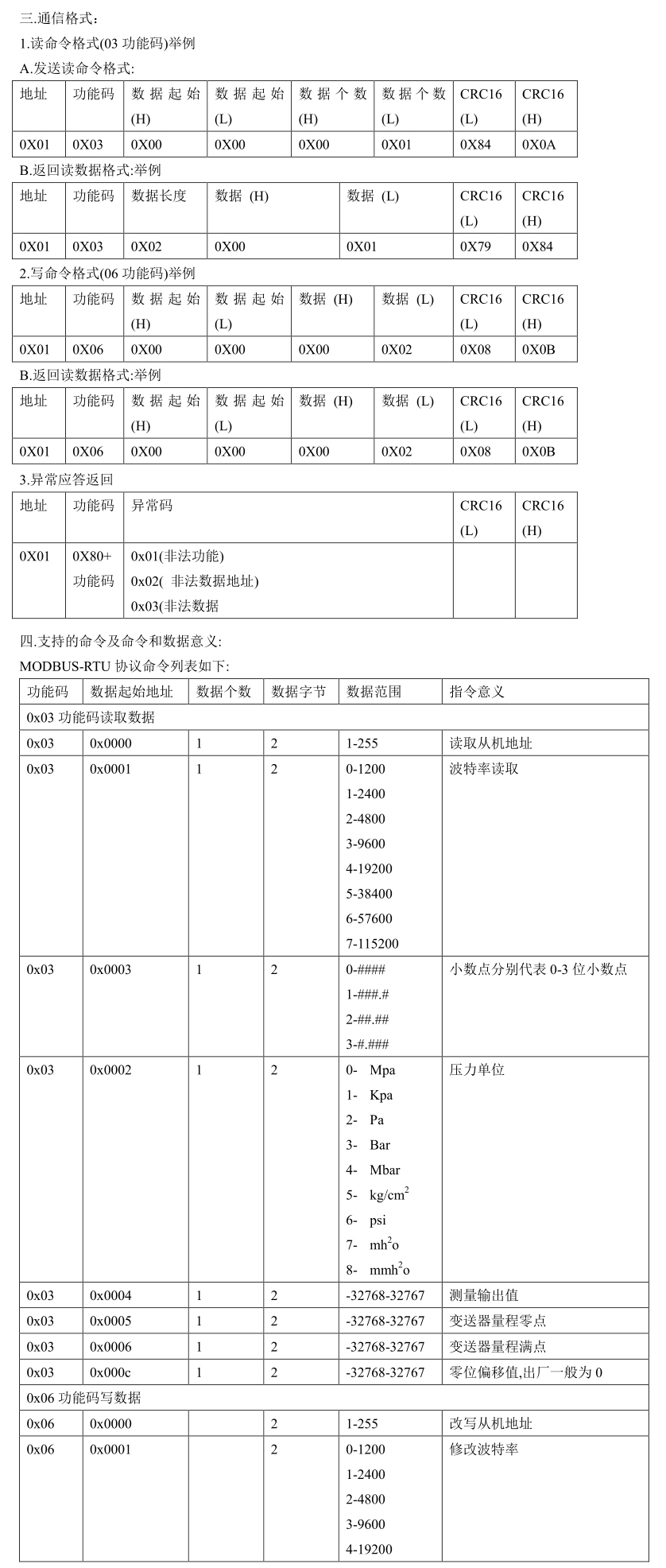

Data in the process of data communication are all processed according to double byte shaping data. If the data is identified as floating-point number, it is necessary to read the decimal point to determine the size of the data

explain:
1. When modifying the baud rate, the transmitter will reply to the modified data at the baud rate sent by the host computer. After the reply, the transmitter baud rate will change to the modified target value
2. When modifying the address, the data will be replied with the address before modification, and the transmitter address will be automatically modified after the reply
3. Save and reply factory command will return the original value, indicating that the transmitter has accepted the command of the host
4. When restoring the factory data, it should be noted that the parameters saved in the factory may not be consistent with those saved by the user, so the address, baud rate and calibration data may not be consistent, so the transmitter must be searched again after the factory parameters are restored
5. There are only three data allowed to be modified by the user, namely address, address, baud rate and zero offset value
6. Generally, the user is not allowed to modify the calibration data of the transmitter. If you need to calibrate and change, please contact our company for the calibration software of the transmitter. Sending the command to modify the calibration data by the user will cause the abnormal code of the transmitter output command. To modify the calibration data, please use our calibration software.
7. If the data to be read is identified by floating-point numbers, such as 6.000, but this protocol stipulates that the data is communicated by shaping data, so the data read is 6000, and then the operation should be performed according to the position of the decimal point to get 6.000. For example, if the decimal point is 3, then 6000 / 10 (3), that is, 6000 divided by the third power of 10 to get 6.000